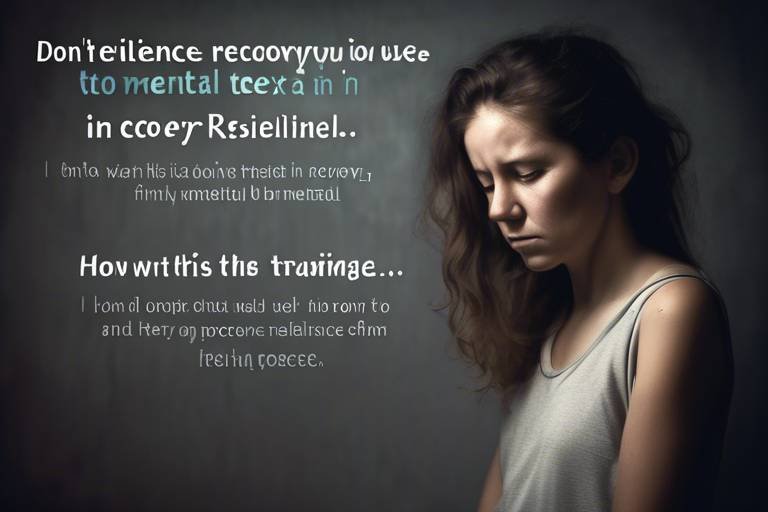Confidence and Assertiveness - The Symbiotic Relationship
Have you ever noticed how some people seem to exude confidence while effortlessly asserting themselves in conversations? It’s almost like they possess a secret formula for success. Well, guess what? There’s a beautiful relationship between confidence and assertiveness that can transform your personal and professional life. Imagine walking into a room, owning your space, and expressing your thoughts without hesitation. That’s the power of combining these two traits! In this article, we will dive deep into what confidence and assertiveness really mean, how they influence each other, and practical strategies to enhance both in your life.
Confidence is that inner voice that tells you, “You’ve got this!” It’s the belief in your abilities and judgments, acting as a driving force in how you tackle challenges. Think of confidence as the sturdy foundation of a house; without it, everything else might crumble. When you approach tasks with confidence, you’re more likely to take risks, make decisions, and engage with others positively. It’s not about being arrogant or thinking you’re better than anyone else; rather, it’s about having a grounded sense of self-worth that propels you forward.
Now, let’s talk about assertiveness. It’s like a superpower that allows you to express your thoughts, feelings, and needs directly and respectfully. Imagine you’re at a restaurant, and your order is wrong. Instead of staying silent or exploding in frustration, an assertive person would calmly address the issue with the waiter. Assertiveness empowers you to communicate effectively without falling into the traps of aggression or passivity. It fosters healthy relationships by ensuring that everyone’s voice is heard and respected. In a world where miscommunication is rampant, being assertive is essential for clarity and understanding.
Self-esteem is the bedrock upon which both confidence and assertiveness stand. When you have a healthy self-image, you’re more likely to assert yourself because you believe your opinions and needs are valid. Conversely, low self-esteem can act like a heavy weight, pulling you down and making it difficult to communicate effectively. It’s like trying to swim with a backpack full of rocks—exhausting and counterproductive! Therefore, nurturing self-esteem is crucial for fostering both confidence and assertiveness.
So, how do you build self-esteem? It starts with recognizing your personal strengths and achievements. Take a moment to reflect on what you’re good at and celebrate those victories, no matter how small. Engaging in positive self-talk is also essential; instead of focusing on your flaws, remind yourself of your capabilities. Setting realistic goals can further enhance your self-worth, providing you with a sense of accomplishment as you achieve them. Remember, every step forward counts!
Low self-esteem, on the other hand, can lead to a vicious cycle of avoidance and insecurity. When you doubt your worth, you may shy away from assertive communication, resulting in misunderstandings and unfulfilled needs. It’s like being stuck in a maze with no way out. This cycle can hinder personal and professional growth, leaving you feeling frustrated and powerless. Recognizing the signs of low self-esteem is the first step to breaking free from this cycle.
Now that we understand the importance of confidence and assertiveness, let’s explore some practical strategies to enhance them. Here are a few effective methods:
- Set Achievable Goals: Start small and gradually increase the difficulty. Each success will boost your confidence.
- Seek Feedback: Don’t be afraid to ask for constructive criticism. It helps you grow and shows you’re open to improvement.
- Practice Self-Affirmation: Regularly remind yourself of your strengths and accomplishments. This can significantly enhance your self-assurance.
Confidence and assertiveness are like two dance partners, each enhancing the other’s performance. When you feel confident, you’re more likely to express yourself assertively. Conversely, when you practice assertive behaviors, your confidence gets a boost. This interplay is vital for personal development and effective communication. It’s like a self-reinforcing loop that propels you toward success!
In professional settings, the combination of confidence and assertiveness can lead to better teamwork and leadership. Individuals who embody these traits are more likely to advocate for themselves and others successfully. Imagine a team meeting where everyone feels empowered to share their ideas and feedback. This not only enhances collaboration but also fosters a positive work environment where everyone feels valued.
However, many individuals face barriers to confidence and assertiveness, such as fear of rejection or past negative experiences. Identifying and addressing these barriers is essential for personal growth and effective communication. It’s like clearing away the fog to reveal a beautiful landscape—once you confront these fears, you’ll find clarity and strength. Remember, overcoming these obstacles may take time, but every step you take is a step toward a more confident and assertive you.
1. What is the difference between confidence and assertiveness?
Confidence is the belief in one’s abilities, while assertiveness is the ability to express thoughts and needs directly and respectfully.
2. Can I be confident without being assertive?
Yes, it’s possible to feel confident in your abilities but struggle with assertiveness. However, developing both traits can lead to greater success.
3. How can I improve my self-esteem?
Improving self-esteem involves recognizing your strengths, engaging in positive self-talk, and setting realistic goals.
4. What are some signs of low self-esteem?
Signs of low self-esteem include negative self-talk, avoidance of challenges, and difficulty asserting needs or opinions.

Understanding Confidence
Confidence is more than just a buzzword; it's the foundation upon which we build our lives. It is the belief in one’s abilities and judgments, a vital force that shapes how we approach challenges and interact with others. Imagine confidence as a sturdy bridge connecting your aspirations to your actions. Without it, the journey to achieving your goals can feel like trying to cross a chasm without any support. When you have confidence, you feel empowered to take risks, voice your opinions, and pursue opportunities that may seem daunting at first.
To truly grasp the essence of confidence, let’s break it down. It’s not just about feeling good about yourself; it’s about understanding your strengths and limitations. Confidence allows you to embrace challenges with an open heart and a determined spirit. Think of it like a muscle—the more you use it, the stronger it becomes. When you tackle tasks that push you out of your comfort zone, you’re effectively working out that muscle, gradually building resilience and self-assurance.
Moreover, confidence is a dynamic quality. It can fluctuate based on various factors, including your environment, experiences, and even the people you surround yourself with. For example, receiving positive feedback at work can boost your confidence, while negative criticism can chip away at it. This interplay between external influences and internal beliefs highlights the importance of cultivating a supportive atmosphere, both personally and professionally.
In essence, confidence plays a crucial role in fostering assertive behavior. When you believe in yourself, you’re more likely to express your thoughts and needs clearly and respectfully. This leads to healthier relationships and more effective communication. So, how do we cultivate this elusive quality?
Here are a few strategies to consider:
- Practice Self-Reflection: Take time to evaluate your strengths and accomplishments. Acknowledging what you do well can significantly boost your confidence.
- Set Achievable Goals: Break your aspirations into smaller, manageable tasks. Each small victory will build your confidence.
- Seek Constructive Feedback: Learn from others while maintaining a balanced perspective on criticism.
By understanding confidence and its profound impact on your life, you can begin to harness its power. It’s a journey worth embarking on, as the rewards—greater assertiveness, improved relationships, and enhanced personal and professional success—are truly invaluable.

Defining Assertiveness
Assertiveness is more than just a buzzword; it’s a vital communication skill that allows individuals to express their thoughts, feelings, and needs in a clear, respectful manner. Imagine walking into a room full of people where everyone is sharing their opinions, yet you feel hesitant to voice yours. That’s where assertiveness comes into play. It’s about standing your ground without bulldozing over others. In essence, being assertive means you can advocate for yourself while also considering the perspectives of those around you.
At its core, assertiveness is about balance. It’s the sweet spot between being passive, where you might let others dictate the conversation or decisions, and being aggressive, where you might overpower others with your opinions. Think of it as a dance; both partners need to be in sync for the performance to be successful. This balance fosters healthy relationships and effective communication, allowing you to express your needs without stepping on anyone’s toes.
In practical terms, assertiveness can manifest in various ways. For instance, it may involve:
- Making eye contact during conversations.
- Using "I" statements to express feelings, such as "I feel..." instead of "You always...".
- Listening actively to others while also sharing your own thoughts.
When you practice assertiveness, you’re not just speaking; you’re engaging in a dialogue that respects both your voice and that of others. This skill is essential in both personal and professional settings. Whether you’re negotiating a raise at work or discussing plans with friends, assertiveness helps you communicate effectively and ensures your needs are met without conflict.
Furthermore, assertiveness can lead to greater self-respect and respect from others. When you assert yourself, you demonstrate that you value your own opinions and feelings, which often encourages others to do the same. This mutual respect is the foundation of strong relationships, whether they are personal or professional. In a world where everyone has something to say, being assertive can be your superpower, allowing you to navigate conversations with confidence and clarity.
In conclusion, defining assertiveness goes beyond merely stating what it is. It’s about understanding its significance in our interactions and recognizing how it can empower us to communicate more effectively. By embracing assertiveness, we not only enhance our own lives but also contribute positively to the lives of those around us.

The Role of Self-Esteem
Self-esteem is like the foundation of a house; without a solid base, everything built on top can become unstable. It profoundly influences both confidence and assertiveness, acting as the internal compass that guides how we perceive ourselves and interact with the world. When we have a healthy self-esteem, we are more likely to embrace challenges and express our needs and desires confidently. Conversely, low self-esteem can act as a barrier, preventing us from communicating effectively and asserting ourselves in various situations.
Imagine walking into a room full of people, feeling like you belong and that your voice matters. That sense of belonging often stems from a strong sense of self-worth. People with high self-esteem are more likely to engage in assertive communication, allowing them to express their thoughts freely without the fear of judgment. They are able to advocate for themselves and others, fostering an environment of mutual respect and understanding.
On the flip side, individuals with low self-esteem might find themselves shrinking in social situations, hesitant to voice their opinions or stand up for their needs. This avoidance can lead to misunderstandings and unfulfilled desires, creating a cycle of insecurity that can be hard to break. It’s essential to recognize that self-esteem isn't just about feeling good; it’s about recognizing our value and understanding that we have the right to be heard.
To illustrate the impact of self-esteem on confidence and assertiveness, consider the following table that highlights key differences between high and low self-esteem:
| Aspect | High Self-Esteem | Low Self-Esteem |
|---|---|---|
| Self-Perception | Positive and realistic | Negative and distorted |
| Communication Style | Assertive and open | Avoidant or aggressive |
| Response to Feedback | Receptive and constructive | Defensive or dismissive |
| Ability to Take Risks | Willing to take on challenges | Averse to new experiences |
As we can see, the differences are stark. High self-esteem not only enhances our confidence but also empowers us to be assertive in various aspects of life. It allows us to navigate our personal and professional relationships with grace and efficacy. Therefore, nurturing self-esteem should be a priority for anyone looking to improve their assertiveness and overall confidence.

Building Self-Esteem
Building self-esteem is like nurturing a delicate plant; it requires consistent care, attention, and the right conditions to flourish. At its core, self-esteem is about recognizing and valuing your worth, and it’s the foundation upon which confidence and assertiveness stand tall. So, how do we cultivate this vital aspect of our personality? One effective way is through self-reflection. Taking the time to assess your strengths and accomplishments can significantly boost your self-image. Think about it: when was the last time you celebrated a personal victory, no matter how small? Each acknowledgment acts as a fertilizer, enriching the soil of your self-worth.
Another powerful tool in building self-esteem is positive self-talk. Imagine your inner voice as a coach cheering you on from the sidelines. Instead of letting it be a critic that points out every flaw, transform it into a supportive ally that highlights your strengths. For instance, instead of saying, “I can’t do this,” switch it to, “I’m capable of figuring this out.” This simple shift in language can change your mindset and, ultimately, your outcomes.
Setting realistic goals is also crucial in this journey. When you set achievable targets, you create a roadmap for success. Each milestone you reach provides a sense of accomplishment that reinforces your self-esteem. It’s like climbing a mountain; each step up brings you closer to the summit, and with every step, you gain confidence in your abilities. To illustrate this, consider the following table that outlines how to set effective goals:
| Goal Type | Characteristics | Example |
|---|---|---|
| Short-term Goals | Specific, measurable, achievable, relevant, time-bound | Complete a book by the end of the month |
| Long-term Goals | Broader objectives that require sustained effort | Earn a degree in your field of interest |
Additionally, surrounding yourself with positive influences can create an environment conducive to building self-esteem. Engaging with supportive friends and mentors who uplift you can make a world of difference. Remember, just as a plant needs sunlight and water to grow, you need encouragement and positivity to thrive. It’s essential to distance yourself from toxic relationships that drain your energy and undermine your self-worth.
Finally, consider the power of self-compassion. Treat yourself with the same kindness you would offer a friend. When faced with setbacks, instead of harshly judging yourself, recognize that everyone makes mistakes and that these experiences are opportunities for growth. Embracing this perspective allows you to build resilience and a healthier self-image.
In conclusion, building self-esteem is a multifaceted process that involves self-reflection, positive self-talk, goal setting, nurturing supportive relationships, and practicing self-compassion. By investing in these areas, you create a strong foundation for confidence and assertiveness, empowering you to navigate both personal and professional landscapes with grace and assurance.
- What are some quick tips for boosting self-esteem? Try writing down three things you like about yourself each day or practicing daily affirmations.
- How long does it take to build self-esteem? Building self-esteem is a personal journey and can vary greatly; consistency in your efforts is key.
- Can low self-esteem affect my relationships? Yes, low self-esteem can lead to communication issues and misunderstandings in relationships.

Effects of Low Self-Esteem
Low self-esteem can have a profound impact on an individual's life, often acting as a barrier to effective communication and personal growth. When a person struggles with feelings of inadequacy, it can create a cycle of avoidance and insecurity that permeates various aspects of their life. For instance, individuals with low self-esteem might find themselves shying away from social interactions or professional opportunities simply because they doubt their abilities or fear negative judgment from others.
This hesitance can manifest in several ways, such as:
- Avoidance of Assertive Communication: People with low self-esteem often struggle to express their needs and feelings. This can lead to misunderstandings in relationships, where their thoughts and desires remain unvoiced, resulting in frustration and resentment.
- Increased Anxiety: The fear of rejection or criticism can heighten anxiety levels, making it even more challenging to engage in assertive behavior. This anxiety often leads to a self-fulfilling prophecy where the fear of failure becomes a reality.
- Negative Self-Talk: Individuals may engage in a cycle of negative self-talk, constantly criticizing themselves for perceived shortcomings. This internal dialogue reinforces their low self-esteem, making it difficult to break free from this detrimental mindset.
Moreover, low self-esteem can hinder personal and professional growth. When individuals doubt their worth, they may not pursue new opportunities or take risks that could lead to success. They might accept less than they deserve in both their personal relationships and career paths, leading to a life that feels unfulfilling and stagnant.
In essence, the effects of low self-esteem are far-reaching and can create a ripple effect that impacts not just the individual, but also their relationships and work environment. Recognizing these effects is the first step toward addressing them. By fostering a healthier self-image, individuals can begin to reclaim their voice and assert themselves in their personal and professional lives.
Q1: How can I improve my self-esteem?
A1: Improving self-esteem involves recognizing your strengths, practicing positive self-talk, setting realistic goals, and surrounding yourself with supportive people. Engaging in activities that you enjoy and excel at can also boost your self-worth.
Q2: What are some signs of low self-esteem?
A2: Signs of low self-esteem can include negative self-talk, avoidance of social situations, difficulty accepting compliments, and a tendency to compare yourself unfavorably to others.
Q3: Can low self-esteem affect my relationships?
A3: Yes, low self-esteem can significantly impact relationships. It may lead to communication issues, dependency, or even conflict, as individuals may struggle to express their needs or set healthy boundaries.
Q4: Is it possible to become more assertive?
A4: Absolutely! Becoming more assertive is a skill that can be developed over time. It involves practicing clear communication, setting boundaries, and learning to express your thoughts and feelings confidently and respectfully.

Strategies for Enhancing Confidence
Building confidence is like nurturing a plant; it requires time, attention, and the right conditions to flourish. One of the most effective strategies for enhancing confidence is to set achievable goals. When you break down larger aspirations into smaller, manageable tasks, each accomplishment serves as a stepping stone, reinforcing your belief in your abilities. For instance, if you aim to improve your public speaking skills, start by practicing in front of a mirror, then progress to speaking in front of friends or family. This gradual exposure helps you build a solid foundation of confidence.
Another powerful method is seeking feedback from trusted peers or mentors. Constructive criticism can illuminate areas for improvement while also highlighting your strengths. Embrace this feedback as a tool for growth rather than a judgment. Remember, even the most seasoned professionals rely on feedback to refine their skills. Engaging in self-affirmation is equally vital; take a moment each day to acknowledge your achievements and remind yourself of your worth. This practice can shift your mindset from self-doubt to self-empowerment.
Additionally, surrounding yourself with positive influences can significantly boost your confidence. People who uplift and encourage you create an environment where you feel safe to express yourself. This supportive network can be a buffer against negativity and self-criticism, allowing you to take risks and assert yourself more freely. Also, consider participating in activities that push you out of your comfort zone. Whether it's joining a new class, volunteering, or taking on a leadership role in a project, these experiences can enhance your confidence by proving to yourself that you can handle challenges.
Finally, practicing mindfulness and visualization techniques can help you prepare mentally for situations that require confidence. Visualize yourself succeeding in a challenging scenario; this mental rehearsal can reduce anxiety and increase your sense of control. Coupled with a positive mindset and a willingness to step outside your comfort zone, these strategies can create a robust framework for building lasting confidence.
- What is the best way to start building confidence? Start small by setting achievable goals and gradually taking on more challenging tasks.
- How important is feedback in enhancing confidence? Feedback is crucial as it provides insights into your strengths and areas for improvement, helping you grow.
- Can self-affirmation really make a difference? Yes! Regularly acknowledging your achievements can significantly shift your mindset towards a more positive self-image.
- How can I overcome fear when trying to be more assertive? Practice mindfulness and visualization techniques to mentally prepare for assertive situations, and remember that it's okay to take small steps.

The Interplay Between Confidence and Assertiveness
Confidence and assertiveness are like two sides of the same coin; they are deeply intertwined and significantly impact one another. When you think about it, confidence is that inner voice that whispers, "You can do this!" while assertiveness is the loud, clear expression of that belief. Imagine you’re at a meeting where you have a brilliant idea. If you’re confident, you’re more likely to share it assertively, ensuring your voice is heard. But what happens if you lack confidence? You might hesitate, mumble, or even shrink back, missing the chance to contribute. This dynamic is a dance that can elevate your personal and professional interactions.
To illustrate this relationship further, let’s consider a practical example. Picture a scenario where a team is brainstorming ideas for a new project. A confident individual might speak up, share their thoughts, and encourage others to do the same. This behavior not only showcases their assertiveness but also inspires confidence in their teammates. Conversely, if someone feels unsure about their ideas, they may remain silent, leading to a lack of assertiveness that stifles innovation and collaboration.
Furthermore, the interplay between confidence and assertiveness can create a ripple effect in various aspects of life. When you practice assertiveness, you reinforce your confidence. It’s like a feedback loop: the more you express your thoughts and needs, the more validation you receive, which in turn boosts your self-esteem. This cycle is crucial for personal growth and effective communication. But, how do you cultivate this interplay?
Here are some strategies to enhance the relationship between confidence and assertiveness:
- Practice Active Listening: Engaging with others and understanding their perspectives can bolster your confidence in expressing your own views.
- Set Small Goals: Start by asserting yourself in low-stakes situations, gradually building up to more significant challenges.
- Seek Feedback: Constructive criticism can help you fine-tune your assertive communication style and boost your confidence.
In professional environments, this interplay can lead to remarkable outcomes. Confident leaders who communicate assertively foster a culture of openness and collaboration. Team members feel valued and encouraged to share their ideas, leading to enhanced creativity and productivity. In contrast, a lack of confidence and assertiveness can create a toxic environment where ideas are stifled, and morale plummets.
In conclusion, nurturing confidence and assertiveness is essential for anyone looking to thrive in their personal and professional lives. By understanding their symbiotic relationship and actively working to enhance both traits, you can unlock a world of opportunities. Remember, it’s not just about having the confidence to speak up; it’s about doing so in a way that respects both yourself and others. So, the next time you find yourself in a situation where you need to assert your thoughts or needs, take a deep breath and let your confidence shine through!
Q1: How can I become more assertive?
A1: Start by practicing clear and direct communication. Use "I" statements to express your feelings and needs without blaming others. Role-playing scenarios can also help you build confidence in asserting yourself.
Q2: What if I struggle with low self-esteem?
A2: Building self-esteem takes time. Focus on your strengths, celebrate small achievements, and consider seeking support from friends, family, or a professional if needed.
Q3: Can assertiveness be learned?
A3: Absolutely! Assertiveness is a skill that can be developed with practice. Engage in workshops, read books on the subject, or find a mentor to guide you.
Q4: How does assertiveness differ from aggression?
A4: Assertiveness involves expressing your thoughts and needs respectfully, while aggression often disregards others' feelings and can lead to conflict. The key is to communicate your needs without undermining others.

Real-Life Applications
When we talk about confidence and assertiveness, it’s not just about feeling good in your skin or being able to speak your mind; it’s about the real, tangible benefits these traits bring to our daily lives. Imagine walking into a meeting with your head held high, ready to share your ideas. That’s confidence at work! It can transform the way you approach challenges and interact with colleagues, clients, and even friends. The beauty of confidence is that it acts like a magnet, drawing opportunities towards you. Think of it as a superpower that opens doors you didn’t even know existed.
In a professional setting, the interplay between confidence and assertiveness can lead to significant improvements in teamwork and leadership. For instance, when team members feel confident in their abilities, they are more likely to contribute their thoughts and ideas during discussions. This not only enhances the quality of the conversation but also fosters a culture of collaboration and innovation. Assertiveness plays a crucial role here; it allows individuals to advocate for their ideas and needs without stepping on others’ toes. This balance ensures that everyone’s voice is heard, creating a more inclusive environment.
Moreover, consider the impact on leadership. A confident leader who communicates assertively can inspire their team to reach new heights. They set the tone for the group, encouraging open dialogue and constructive feedback. This kind of environment not only boosts morale but also drives productivity. When team members feel valued and empowered, they are more likely to take initiative and contribute positively to the organization’s goals.
Let’s not forget about the personal realm. Confidence and assertiveness can significantly enhance your relationships. Whether it’s setting boundaries with friends or expressing your feelings to a partner, being assertive helps you communicate your needs clearly. It’s like having a clear roadmap for your relationships—without it, misunderstandings can easily arise, leading to frustration and resentment. When you approach your personal life with confidence, you’re more likely to attract healthy relationships that are built on mutual respect and understanding.
To sum it up, the real-life applications of confidence and assertiveness are vast and impactful. They can lead to:
- Enhanced teamwork and collaboration
- Improved leadership effectiveness
- Stronger personal relationships
- Increased opportunities for career advancement
So, the next time you find yourself in a situation that calls for confidence and assertiveness, remember that these traits are not just nice to have—they are essential tools for navigating both your professional and personal life successfully.
Here are some common questions people have about confidence and assertiveness:
- What is the difference between confidence and assertiveness? Confidence is about believing in your abilities, while assertiveness is about expressing your thoughts and needs clearly and respectfully.
- Can I be confident without being assertive? Yes, it’s possible to feel confident in your skills but struggle with assertive communication. Both traits can be developed independently.
- How can I improve my assertiveness? Practice expressing your thoughts and feelings in a clear and respectful manner. Start small, and gradually tackle more challenging conversations.
- What role does self-esteem play in confidence and assertiveness? High self-esteem boosts both confidence and assertiveness, while low self-esteem can hinder effective communication and personal expression.

Overcoming Barriers
Many individuals encounter various barriers that hinder their confidence and assertiveness. These obstacles can stem from a variety of sources, including fear of rejection, past negative experiences, and even societal expectations. It's like trying to swim upstream; the current is strong, but with the right techniques, you can navigate through it. Recognizing these barriers is the first step towards overcoming them. For instance, fear of rejection may stem from a traumatic experience where one’s opinions were dismissed or criticized. This fear can create a mental block, making it challenging to express oneself effectively.
To combat these barriers, individuals can adopt several strategies that not only help in identifying their fears but also in reframing their mindset. Here are some practical approaches:
- Self-Reflection: Take time to understand your fears. Ask yourself, "What is the worst that could happen?" Often, the outcomes we fear are exaggerated in our minds.
- Gradual Exposure: Start small. Practice assertive communication in low-stakes situations, like expressing your preferences to friends or family.
- Seek Support: Surround yourself with supportive individuals who encourage you to be assertive. Sharing your experiences with a trusted friend or mentor can provide valuable insights and reassurance.
Moreover, it’s crucial to address the internal dialogue that often accompanies these barriers. Negative self-talk can be a significant roadblock. By challenging these thoughts and replacing them with positive affirmations, you can build a more resilient mindset. For example, instead of thinking, "I’ll embarrass myself if I speak up," try reframing it to, "My thoughts are valuable, and I deserve to share them." This shift can have a profound impact on your overall confidence.
Additionally, past negative experiences can create a cycle of insecurity that feeds into your current interactions. It’s essential to acknowledge these experiences but also to recognize that they do not define your future. Engaging in activities that reinforce your strengths and celebrating small victories can help break this cycle. Remember, each small step towards assertiveness is a victory worth celebrating!
In summary, overcoming barriers to confidence and assertiveness involves a combination of self-awareness, gradual exposure, and positive reinforcement. It’s about taking control of your narrative and allowing yourself the space to grow. Just like a flower breaking through concrete, you can flourish despite the obstacles in your path.
Q: What are some common barriers to assertiveness?
A: Common barriers include fear of rejection, past negative experiences, low self-esteem, and societal pressures.
Q: How can I improve my self-esteem?
A: Improving self-esteem can be achieved through recognizing personal strengths, engaging in positive self-talk, and setting achievable goals.
Q: What is the relationship between confidence and assertiveness?
A: Confidence fosters assertiveness, and practicing assertive behavior can enhance one's confidence, creating a positive feedback loop.
Q: How can I practice assertiveness in daily life?
A: Start by expressing your opinions in low-stakes situations, gradually working your way up to more significant interactions.
Frequently Asked Questions
- What is the difference between confidence and assertiveness?
Confidence is about believing in your abilities and judgments, while assertiveness is the ability to express your thoughts, feelings, and needs directly and respectfully. Think of confidence as the fuel that powers your assertiveness; without it, you might hesitate to speak up.
- How can I improve my self-esteem?
Improving self-esteem starts with recognizing your strengths and celebrating your achievements, no matter how small. Engage in positive self-talk, set realistic goals, and surround yourself with supportive people who uplift you. It’s like building a strong foundation for a house; without it, everything else might crumble.
- Why is assertiveness important in professional settings?
Assertiveness is crucial in the workplace as it fosters clear communication, reduces misunderstandings, and promotes healthy relationships among colleagues. When you assert yourself, you advocate for your ideas and needs, which can lead to better teamwork and leadership opportunities.
- What are some strategies to enhance my confidence?
To boost your confidence, try setting achievable goals, seeking constructive feedback, and practicing self-affirmation. These strategies help you build a positive self-image and encourage you to step out of your comfort zone, much like training for a marathon prepares you for the race.
- How do low self-esteem and assertiveness relate to each other?
Low self-esteem can create a barrier to assertive communication. When you don’t believe in your worth, it’s tough to express your needs and feelings confidently. This creates a cycle where insecurity breeds more insecurity, making it essential to work on self-esteem to become more assertive.
- What barriers might prevent me from being assertive?
Common barriers include fear of rejection, past negative experiences, and a lack of self-confidence. Recognizing these obstacles is the first step toward overcoming them. It’s like clearing the roadblocks on a path to success; once you identify them, you can navigate around or remove them.



















